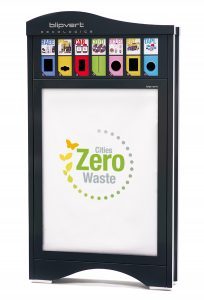INTERVIEW WITH A SMARTPHONE
I win both man and woman’s hearts.
I’m universal and essential, I create an addiction.
Without me, the 21st Century wouldn’t be what it is.
Guess… Who am I?
Currently, in this country, there are around 70 million active smartphones.
That’s right, we, the phones, are everywhere: travelling by train, in the classrooms of schools and universities or sleeping in hospitals. We interrupt equally love scenes, family meals and political meetings, there are even fathers and mothers that entertain their babies with our screens…
If we take off the babies, the rest of the population get almost two devices per head. You can’t be more popular. How does it feel?
We actually are very popular, but most of the people isn’t faithful and, generally change the smartphone every 18 months for another more attractive and modern.
Do you really last so little?
If you knew… Every year about 20 million smartphones get thrown away only because of a little imperfection or because a new, more desirable, model has appeared in the market.
Wat happens with the disposed smartphones?
In general terms, a 25% come back to the market later on, a 10% are recycled and a 5% get forgotten in a drawer for years.
“In Spain there are about 100 million mobiles left in drawers. And it is increasing”
Now that you mention it, I have at least two old smartphones forgotten amongst the junk.
You, Mr. reporter, are no exception: my fonts hold that in Spain there are about 100 million mobiles left in drawers. And the numbers are just increasing.
And the rest? Where do the smartphones that don’t return to the market or don’t get recycled go?
They are probably incinerated, meaning they are destroyed in the worst way possible. That’s because they end up polluting in an extreme way and because the materials can’t be recovered easily, since many of them are extracted from the mines and cause a terrible human and environmental cost while doing it.
A foolishness?
Yes, an enormous foolishness or an embarrassing ignorance. Smartphones batteries can turn up to be very polluting: they contain cobalt, nickel, manganese, lithium, graphite, etc. Thrown away right around there, smartphones or devices of any kind, we are terrible for the environment. However, if you get us back, we are a valuable and useful treasure.
Don’t exaggerate. A valuable treasure?
From a single smartphone that weights around 100 grams, you can extract more than 55 grams of plastics, 25 grams of minerals, 17 grams of fiberglass and an interesting pinch of precious metals.
Plastics, glass, minerals, precious metals…? It appears as though you are a tiny bit of the planet.
If people only knew what they have in their hands…
Well, now is the moment: concrete yourself, what are you made of?
For the motherboard, it has been necessary plastic covered in gold, silver, copper, zinc…
For the battery; lithium and cobalt.
For the electric connections; copper, silver, tantalum and gold.
For the carcass; plastic.
And, in order to weld and assemble all the parts of the phone; lead and tin.
Is there something else?
You won’t believe it. To generate the vibration ahead of an electrical impulse, tungsten (or wolfram) is used, and for the condensers that manage the electrical flux, coltan, the often called “blue gold”. As you may know, it is a mixture of two lacking minerals; columbite and tantalite, frequently extracted from clandestine mines from Congo.
That is savage!
Well, savages are the ones that throw mobile phones away mixed with banana peels and tin plates.
But I understand that about the 90% material of each mobile phone is reusable.
That’s exactly true.
¿?
A large part of these materials can be recycled and reused, with what this involves referring to the preservation of the environment.
Well, then, when we think of changing the mobile phone, what do we do with the old ones like you?
Go home, search for that device abandoned in the drawer and take it to an authorized collecting point or to a dumpster appointed for electrical equipment.
If they can’t be reintroduced, a prepared vehicle and a qualified individual will take it to a warehouse and, from there, it will go to a treatment plant where they will separate the battery and send it to a precise treatment plant.
Next, they will submit it to a trituration process and separate the materials. Maybe it’s done by using jets of air that divide the heavy metals from the lighter ones, or perhaps it would be done by means of magnetic attraction, using magnets.
Once the elements are separated, both the plastics and the metals will be transformed into raw material which will be able to come back to the market and will be used to fabricate all kinds of devices.
Would you want to add anything else?
Yes. Any day now, with everybody’s effort, in a conscient and solidary way, with every tiny quotidian act, we will eventually encourage and breathe life into the future life of the Planet.

Urban Green Point, Blipvert

